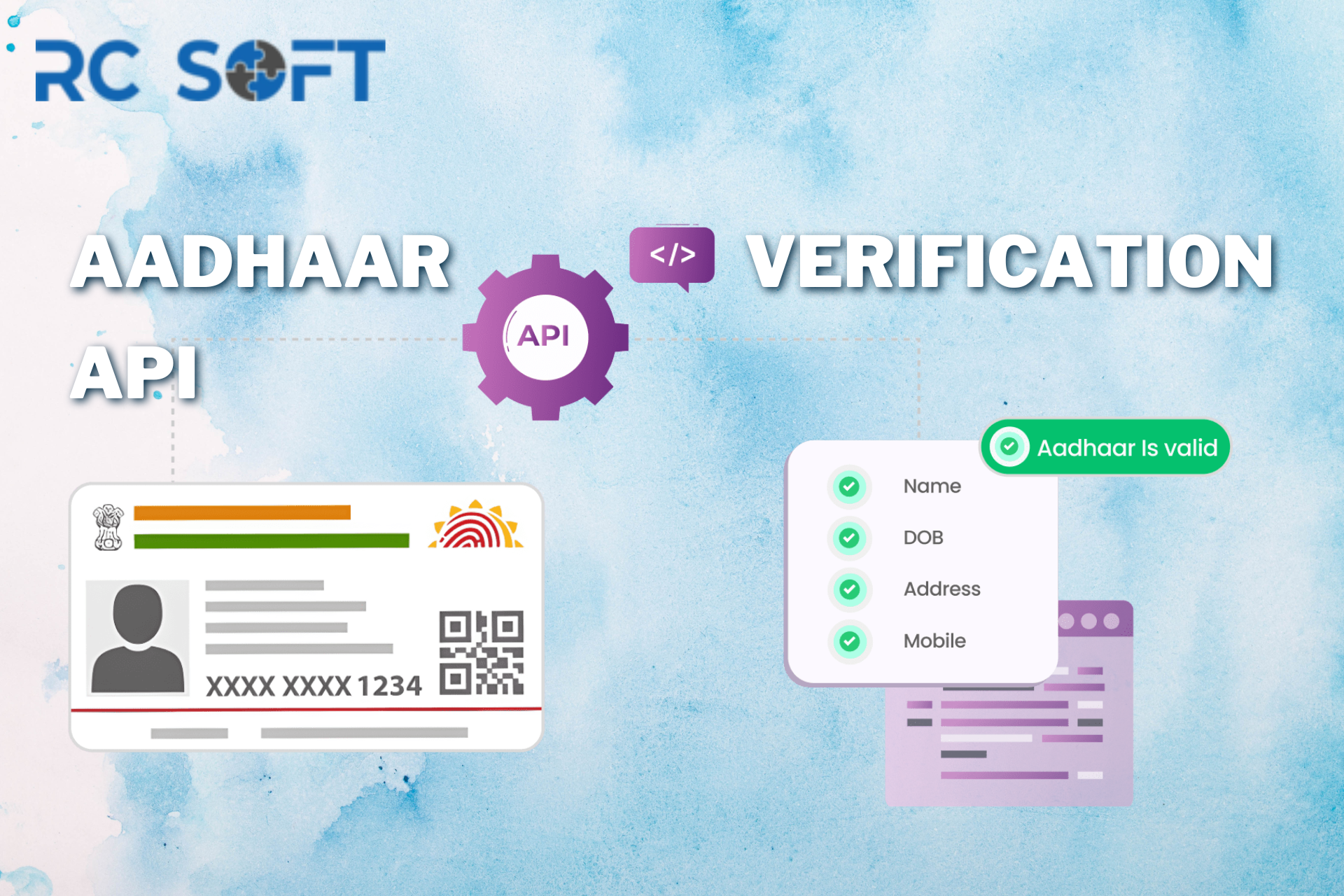In a digital-first world, identity verification has become a crucial aspect of securing transactions, onboarding customers, and ensuring compliance with regulatory requirements. For businesses in India, Aadhaar—the unique identification number issued by the Indian government—serves as a reliable and widely accepted proof of identity. Integrating Aadhaar Verification API into your business processes can significantly enhance security, streamline operations, and provide a seamless customer experience.
What is Aadhaar Verification API?
The Aadhaar Verification API is a tool that allows businesses to verify the identity of individuals by cross-referencing their Aadhaar number with the data stored in the UIDAI (Unique Identification Authority of India) database. This API provides instant verification, ensuring that the person you are dealing with is who they claim to be. It’s a crucial component for businesses that need to authenticate user identities, prevent fraud, and comply with KYC (Know Your Customer) norms.
Instant Identity Verification:
The Aadhaar Verification API provides real-time verification of a user’s identity by matching the Aadhaar number provided by the user with the UIDAI database. This instant verification process reduces delays and allows businesses to onboard customers quickly.
Biometric and OTP Authentication:
The API supports both biometric (fingerprint/iris) and One-Time Password (OTP) authentication methods, providing a high level of security. Users can choose the method they are most comfortable with, enhancing the user experience.
Secure Data Handling:
Security is a top priority when dealing with sensitive personal information. The Aadhaar Verification API is designed with robust encryption and secure data handling practices, ensuring that user data is protected at all times.
Compliance with Regulatory Standards:
For businesses in sectors like banking, finance, and telecom, complying with KYC and AML (Anti-Money Laundering) regulations is mandatory. The Aadhaar Verification API helps businesses meet these regulatory requirements efficiently.
Seamless Integration:
The API can be easily integrated with existing systems, including CRM, ERP, and customer onboarding platforms. This seamless integration ensures that businesses can quickly adopt the API without extensive changes to their infrastructure.
Bulk Verification:
The Aadhaar Verification API supports bulk verification, allowing businesses to verify multiple Aadhaar numbers simultaneously. This feature is particularly useful for large-scale operations such as employee verification or customer onboarding campaigns.
Benefits of Using Aadhaar Verification API
Enhanced Security:
By verifying the identity of users through Aadhaar, businesses can significantly reduce the risk of fraud and unauthorized access. This is especially important for industries dealing with sensitive information or financial transactions.
Faster Onboarding Process:
The instant verification capability of the Aadhaar Verification API speeds up the customer onboarding process. This not only improves the customer experience but also enables businesses to scale their operations more efficiently.
Cost-Effective Compliance:
The API helps businesses comply with KYC and other regulatory requirements in a cost-effective manner. Automated verification reduces the need for manual checks, saving time and resources.
Improved Customer Trust:
When customers know that their identity is being verified through a trusted and secure process, it builds trust. This trust is crucial for businesses that rely on ongoing customer relationships.
Operational Efficiency:
Integrating Aadhaar Verification API into business processes streamlines operations, reduces manual errors, and ensures that only verified individuals can access services or complete transactions.
Use Cases for Aadhaar Verification API
Banking and Financial Services:
Banks and financial institutions can use the Aadhaar Verification API to comply with KYC norms, authenticate loan applicants, and prevent identity theft.
Telecommunications:
Telecom companies can verify the identity of new subscribers instantly, ensuring compliance with regulatory requirements and reducing the risk of fraud.
E-commerce and Digital Wallets:
E-commerce platforms and digital wallet providers can use the API to verify the identity of users during account creation, ensuring a secure and trustworthy environment for transactions.
Healthcare:
Healthcare providers can use Aadhaar Verification API to authenticate patients, ensuring that medical records are accurately maintained and accessed only by authorized individuals.
Government Services:
Government agencies can streamline the distribution of benefits and subsidies by verifying the identity of beneficiaries using the Aadhaar Verification API.
How to Implement Aadhaar Verification API
Choose a Trusted API Provider: Select an API provider that offers reliable, secure, and compliant Aadhaar verification services. Ensure that the provider adheres to the latest guidelines issued by UIDAI.
Integrate with Existing Systems: Work with your development team to integrate the API with your existing systems, such as customer onboarding platforms, CRM, or ERP systems.
Test and Optimize: Conduct thorough testing to ensure that the API works seamlessly and provides accurate verification results. Optimize the integration based on feedback and performance metrics.
Monitor and Maintain: Regularly monitor the API’s performance and make updates as necessary. Ensure that your business remains compliant with any changes in regulations related to Aadhaar verification.
Conclusion
Incorporating the Aadhaar Verification API into your business processes is not just about compliance—it’s about enhancing security, improving customer trust, and streamlining operations. Whether you’re in banking, telecommunications, e-commerce, or healthcare, the Aadhaar Verification API offers a robust solution for verifying user identities quickly and securely. By adopting this technology, businesses can stay ahead of the curve, providing a safer, more efficient experience for their customers.












